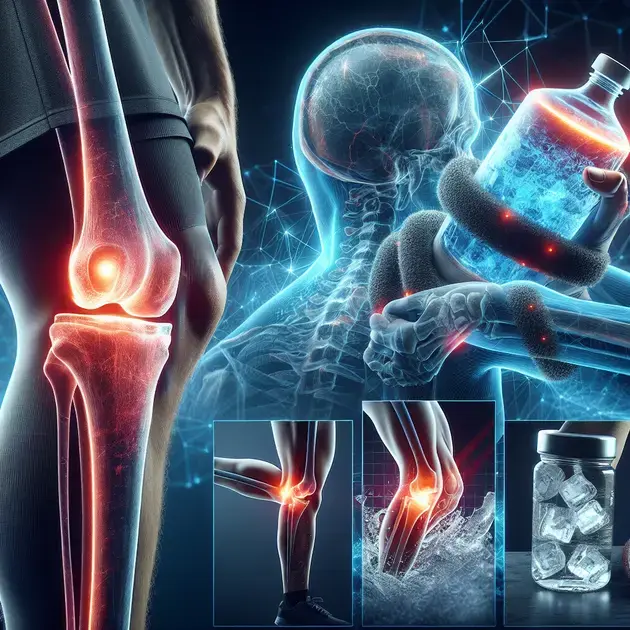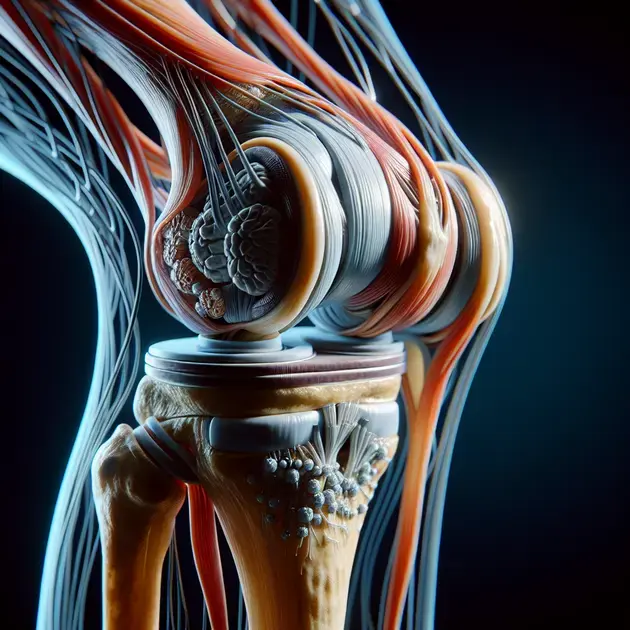Are you looking for effective ways to relieve knee pain? You’re not alone. In today’s fast-paced world, knee pain is a common issue that affects people of all ages. Whether it’s due to an injury, arthritis, or overuse, finding ways to alleviate the discomfort and improve mobility is crucial for maintaining a good quality of life.
Fortunately, there are several strategies and treatments that can help manage knee pain effectively. From simple lifestyle changes to targeted exercises and medical interventions, exploring the right approach for your specific situation can make a significant difference in reducing pain and enhancing your overall well-being.
Top Strategies for Relieving Knee Pain
When it comes to managing knee pain, there are several effective strategies that can help alleviate discomfort and promote healing. Below are some top strategies that you can incorporate into your daily routine to relieve knee pain:
1. Stay Active:
Regular exercise is crucial for maintaining strong and flexible knees. Low-impact activities such as swimming, cycling, or walking can help strengthen the muscles around the knee joint, reducing pain and improving mobility.
2. Use Hot and Cold Therapy:
Applying heat packs or ice packs to the affected knee can help reduce inflammation and relieve pain. Alternating between hot and cold therapy can also promote blood flow and aid in the healing process.
3. Try Acupuncture:
Acupuncture is a natural treatment that involves inserting thin needles into specific points on the body to alleviate pain and improve energy flow. Many people find acupuncture to be effective in reducing knee pain.
4. Maintain a Healthy Weight:
Excess weight can put added stress on the knees, leading to increased pain and discomfort. By maintaining a healthy weight through a balanced diet and regular exercise, you can reduce the strain on your knee joints.
5. Practice Mindful Meditation:
Stress and anxiety can exacerbate knee pain. Practicing mindful meditation and relaxation techniques can help reduce stress levels, leading to less pain and improved overall well-being.
At-Home Remedies to Alleviate Knee Discomfort
When you’re looking for ways to alleviate knee discomfort at home, there are several remedies you can try to help relieve pain and promote healing. Here are some effective at-home remedies for knee discomfort:
1. Epsom Salt Soak:
Soaking your knees in warm water mixed with Epsom salt can help reduce inflammation and relieve pain. The magnesium in Epsom salt can also aid in muscle relaxation and promote healing.
2. Turmeric Tea:
Turmeric is known for its anti-inflammatory properties. Drinking turmeric tea or adding turmeric to your meals can help reduce knee pain and swelling.
3. Compression Bandage:
Applying a compression bandage to the affected knee can provide support and reduce swelling. Make sure not to wrap it too tightly to avoid cutting off circulation.
4. Elevate Your Leg:
Keeping your leg elevated can help reduce swelling and improve circulation. Prop up your leg with pillows while resting or sleeping to alleviate knee discomfort.
5. Gentle Stretching Exercises:
Performing gentle stretching exercises can help improve flexibility and reduce stiffness in the knee joint. Make sure to consult with a physical therapist for guidance on the most effective stretches for knee pain.
Medical Treatments for Managing Knee Pain
In some cases, medical treatments may be necessary to effectively manage knee pain and promote healing. Here are some common medical treatments used for managing knee pain:
1. Physical Therapy:
A physical therapist can create a customized exercise plan to help strengthen the muscles around the knee joint and improve mobility. Physical therapy can be highly beneficial for reducing knee pain.
2. Corticosteroid Injections:
Corticosteroid injections can help reduce inflammation and alleviate pain in the knee joint. These injections are often recommended for individuals with arthritis or other inflammatory conditions.
3. Knee Arthroscopy:
Knee arthroscopy is a minimally invasive surgical procedure that allows doctors to diagnose and treat a variety of knee problems, such as torn cartilage or damaged ligaments.
4. Orthopedic Braces:
Orthopedic braces can provide support and stability to the knee joint, reducing pain and preventing further injury. Your doctor may recommend wearing a brace during physical activity or as needed for daily use.
5. Joint Replacement Surgery:
In severe cases of knee pain and damage, joint replacement surgery may be recommended. This surgical procedure involves replacing the damaged knee joint with a prosthetic implant to restore function and reduce pain.
**Alternative Therapies for Easing Knee Pain**
Acupuncture
Acupuncture is a traditional Chinese medicine technique that involves inserting thin needles into specific points on the body to stimulate energy flow. This alternative therapy has been used for centuries to help alleviate various types of pain, including knee pain. By targeting specific acupuncture points related to the knee, it can help reduce inflammation, improve blood circulation, and relieve discomfort.
Step-by-step guide:
- Find a licensed acupuncturist with experience in treating knee pain.
- Discuss your knee pain symptoms and medical history with the acupuncturist.
- During the session, the acupuncturist will carefully insert needles into specific points on your body, including the knees.
- Relax and allow the needles to work their magic for about 20-30 minutes.
- Repeat sessions may be necessary for optimal results.
Cryotherapy
Cryotherapy involves the application of cold therapy to the affected area to help reduce pain and inflammation. This alternative therapy can be particularly effective for easing knee pain caused by injuries or conditions like arthritis. By applying cold packs or undergoing whole-body cryotherapy sessions, individuals can experience relief from knee discomfort and swelling.
Step-by-step guide:
- Consult with a healthcare provider before trying cryotherapy to ensure it is safe for you.
- Apply a cold pack to the knee for around 15-20 minutes at a time, several times a day.
- Consider whole-body cryotherapy sessions at specialized facilities for more targeted treatment.
- Monitor your knee’s response to cryotherapy and adjust the frequency and duration accordingly.
- Combine cryotherapy with other therapies for comprehensive knee pain relief.
Herbal Remedies
Herbal remedies have long been used in traditional medicine systems to alleviate pain and promote healing. For knee pain, certain herbs like ginger, turmeric, and willow bark have anti-inflammatory and analgesic properties that can help ease discomfort. Whether consumed in teas, capsules, or applied topically as ointments, herbal remedies offer a natural approach to managing knee pain.
Step-by-step guide:
- Research and select high-quality herbal products from reputable sources.
- Consult a herbalist or healthcare provider to determine the best herbs for your specific knee pain.
- Follow the recommended dosage instructions for herbal remedies to ensure safety and effectiveness.
- Monitor your knee pain symptoms and adjust the herbal treatment as needed.
- Combine herbal remedies with other therapies for a holistic approach to knee pain management.
**
Conclusion
**
Exploring alternative therapies for easing knee pain can provide individuals with effective and natural ways to manage discomfort and improve overall well-being. Acupuncture, a traditional Chinese medicine technique, targets specific points on the body, including the knees, to reduce inflammation, enhance blood circulation, and alleviate pain. By seeking a licensed acupuncturist experienced in treating knee pain and undergoing sessions, individuals can experience relief and better mobility.
Cryotherapy, another alternative therapy, offers a non-invasive approach to reduce knee pain caused by injuries or conditions like arthritis. By applying cold packs or undergoing whole-body cryotherapy sessions under proper guidance, individuals can effectively manage pain and swelling in the knees. Monitoring the knee’s response and combining cryotherapy with other treatments can lead to comprehensive relief and improved quality of life.
Additionally, herbal remedies present a natural and holistic way to address knee pain. Incorporating herbs such as ginger, turmeric, and willow bark, known for their anti-inflammatory and analgesic properties, can help individuals manage discomfort through teas, capsules, or topical applications. Consulting with a herbalist or healthcare provider, following dosage recommendations, and combining herbal remedies with other therapies can create a well-rounded approach to knee pain management and long-term relief.


















